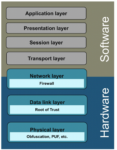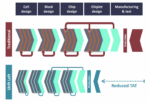You are currently viewing SemiWiki as a guest which gives you limited access to the site. To view blog comments and experience other SemiWiki features you must be a registered member. Registration is fast, simple, and absolutely free so please,
join our community today!
At the recent User2user conference, Amit Kumar, Principal Hardware Engineer, Microsoft, shared the company’s experience from building a 3DIC SoC and highlighted Siemens EDA tools that were used. The following is a synthesis of core aspects of that talk.
3DIC Challenges
Despite the numerous advantages of 3DIC technology, its… Read More
In the fast-paced world of electronic design automation (EDA) software development, maintaining high code quality while adhering to tight deadlines is a significant challenge. Code coverage, an essential metric in software testing, measures the extent to which a software’s source code is executed in tests. High code… Read More
In today’s rapidly advancing technological landscape, semiconductors are at the heart of innovation across diverse industries such as automotive, healthcare, telecommunications, and consumer electronics. As a leader in technology and engineering, Siemens plays a pivotal role in empowering the next generation … Read More
With the advent of IoT devices, vehicles have become increasingly interconnected, offering enhanced automation, connectivity, electrification, and shared mobility. However, this progress also brings forth unprecedented challenges, particularly in ensuring the safety and security of automotive electronics. The complexity… Read More
In today’s rapidly evolving semiconductor industry, the design and integration of intellectual property (IP) play a pivotal role in achieving competitive advantage and market success. Whether sourced from commercial IP providers or developed in-house, ensuring that IP designs are compliant with signoff requirements… Read More
Over the last few years, there has been an increase in news about quantum computing. Much of this news coverage has been around computing supremacy, potential threats to information security and quantum cryptography. While the field of quantum computing is still in its early stages, there are several companies who have already… Read More
The evolution of space-based applications continues to drive innovation across government and private entities. The new demands for advanced capabilities and feature sets have a direct impact on the underlying hardware, driving companies to migrate to smaller geometries to deliver the required performance, area, and power… Read More
Printed Circuit Boards (PCBs) are the foundation of modern electronics, and designing them efficiently is complex. Design automation and advanced PCB routing have transformed the process, making it faster and more reliable. Design automation streamlines tasks, reduces errors, and ensures consistency. Advanced PCB routing… Read More
Jean-Marie Brunet is Vice President and General Manager of Siemens Hardware-Assisted Verification. He and I spoke recently about how different his hardware group is from the rest of the software-centric EDA product space and why a hardware-oriented EDA vendor like Siemens fully understands the challenges of the chip design… Read More
While the leap from traditional SoC/IC designs to Three-Dimensional Integrated Circuits (3DICs) designs brings new benefits and opportunities, it also introduces new challenges. The benefits include performance, power efficiency, footprint reduction and cost savings. The challenges span design, verification, thermal… Read More










